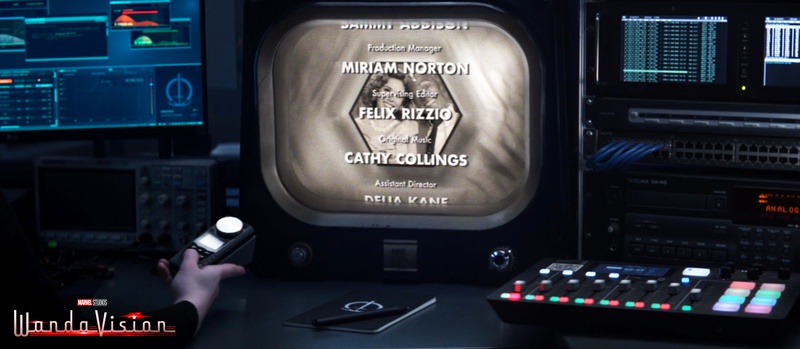
WandaVision opened a new chapter for the Marvel Cinematic Universe on the small screen, putting the spotlight on Elizabeth Olsen's Wanda Maximoff and Paul Bettany's Vision.
The series followed Wanda's post-Avengers: Endgame adventure as she tries to navigate a life without Vision. However, it was revealed that Vision was alive even after Thanos killed him during Avengers: Infinity War.
The specifics of how Vision was alive is one of the mysteries of WandaVision, but it was eventually confirmed that it was Wanda who accidentally orchestrated the whole ordeal.
Throughout its nine-episode run, the show unfolded to reveal that Wanda created her own sitcom world to process her grief over Vision's death, but at the expense of the normal lives of the citizens of Westview, New Jersey. Not only that, but it was also unveiled that every episode of Wanda's hex is being broadcasted in the outside world, thus giving SWORD an inside view of what's happening inside the suburban town.
After a successful season, the creator of WandaVision has finally opened up about the reasoning behind the inclusion of TV signals in the series.
WANDAVISION CREATOR OPENS UP ABOUT THE HEX

WandaVision creator Jac Schaeffer recently sat down with Rolling Stone to talk about the hit Marvel series and the show's connection to the television realm.
In the show, it was revealed that Wanda hexed Westview into its own sitcom world, broadcasting a signal that was eventually captured by SWORD through the help of Kat Dennings' Darcy Lewis. Schaeffer shared the reason behind this plot point, explaining that Wanda is “creating the full picture of her idealized world:”
“In my mind, Wanda is broadcasting for two reasons. One, she’s curating her experience. She is creating the full picture of her idealized world. So she’s editing and adding a score and adding commercials, and she’s making the completed piece that is verification of her perfect life.”
The head scribe then pointed out that Wanda is also “looking for a witness,” admitting that it's a “call for help” from the character. However, Schaeffer confirmed that Wanda's tune changed during the Hex-pansion at the seventh episode of the series:
“Second to that, I think she’s looking for a witness. It’s a call for help. It’s reaching out. The broadcast ends and cuts out after the hex expansion at the end of Episode Seven. And that’s because she’s done with the outside world."
WANDA'S LOVE FOR TELEVISION
Schaeffer's reveal about the true reason behind the TV signals of WandaVision makes narrative sense, especially after the show established Wanda's passion for sitcoms through flashbacks. To recap, the eighth episode of the series showcased Wanda's love for classic sitcoms, showing off different TV show inspirations like the Dick Van Dyke Show to The Brady Bunch.
Schaeffer's comment about the idea that Wanda is “creating the full picture of her idealized world” is a fitting explanation to the evolution of the character throughout WandaVision. Wanda only wanted a happy life, but it was evident that she will eventually face the tragic truth of reality that her fake world will come to an end at some point.
While the finale achieved that feat, WandaVision still served as a reminder of Wanda's perfect life. It remains to be seen if the newly-transformed Scarlet Witch will do a re-run of having a family in the outside world, but it looks like she will need to deal with the consequences of her actions first in Doctor Strange in the Multiverse of Madness.
Meanwhile, the “call for help” remark should allude to the fact that Wanda didn't mean to start the Hex. This could be a beacon for any ally in the outside world, presumably for Benedict Cumberbatch's Doctor Strange. It is unknown if Strange became aware of Wanda's Hex, but it seems that all will be revealed during his next chapter with the Scarlet With in his own sequel.
All episodes of WandaVision are now streaming on Disney+.












